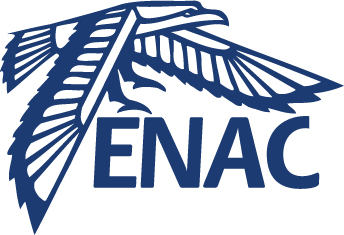Integrity Monitoring for A-PNT Using Barometric Measurements Aided Multi-DMEs
Résumé
The Global Navigation Satellite System (GNSS) has been widely used to provide high-precision and high-integrity services for many aeronautical applications. GNSS has become the primary means of navigation in aeronautics and will continue to do so with the advent of multi-frequency multi-constellation services. However, because of the low signal strength, GNSS is vulnerable to interference, intentional and unintentional. There is therefore, a need to provision Alternative Positioning, Navigation and Timing (A-PNT) services for use during a GNSS outage. Such solutions are being investigated to provide RNP services down to RNP 0.3, and are under study within the SESAR (Single European Sky ATM Research) Solution PJ.14-W2-81. While there are several new technologies proposed to support a A-PNT solution, DME/DME (Distance Measuring Equipment) navigation is primary candidate in the mid-term and a potential long-term candidate. This is as a result of its large equipage base on the ground and within the aircraft fleet. Current work mainly focuses on the use of DME/DME as the main reversionary capability to maintain safety and continuity of operation during a GNSS outage. Two facts drive the community to consider using multi-DME in this field, in which the number of available DME exceeds two with high coverage. First, when there is only one pair of DMEs used to aircraft location detection, the direction crossing angle of the line-of-sight vectors to the station must lie within the 30-150? range. Second, many investigations have indicated that the accuracy and integrity of positioning are increased using multi DME approach. For an example, upwards of 20 DMEs are visible within 40NM of CDG airport when the aircraft is above 6000ft altitude, making it possible to use multi-DME positioning. Taking advantage of this existing DME measurements redundancy, the multi-DME positioning algorithm derives a bounding of DME positioning error to support the 10-5/h OBPMA integrity requirements for RNP1. In this paper, we propose a novel autonomous integrity monitoring method for multi-DME positioning with barometric measurements. Firstly, DME data is used to augment the modelling of measurement errors, in particular to estimate the time correlation properties of the error sources which is critical to the integrity allocation. Secondly, an integrity allocation for the application of RAIM to multi-DME is proposed. Thirdly, an integrity monitoring mechanism based on (Advanced) Receiver Autonomous Integrity Monitoring (RAIM) is developed to meet the allocated integrity risk for certain faulty states within the multi-DME APNT framework. Finally, barometric altimeter is combined to improve the performance of integrity monitoring. Most of the existing research has been focused on using only DME signals to conduct fault detection and integrity monitoring. However, the barometric altimeter, which can significantly improve the integrity performance if combined, is neglected by the community. We propose a method to include barometric altimeter for integrity monitoring of multi-DME. The combination of the barometric altimeter and DME system that are widely equipped on the aircraft can make full use of the altitude value provided by the altimeter to increase the amount of redundant information and improve the availability of the Autonomous Integrity Monitoring. Introducing the barometric altimeter observation equation into the observation equation of the multi-DME system can expand the number of observation equations, reduce the dependence on the number of DME stations, and improve the geometric performance of the DME stations. The results demonstrate that the proposed method improves the performance of the autonomous integrity monitoring algorithm. This paper is organized as follows: Section I: An introduction is presented to describe the background of our proposed methods and the outline of the method is also described. Section II: The models of Autonomous Integrity Monitoring for multi-DME system with barometric measurement is derived, including the evaluation of integrity risk and fault detection and exclusion. The measurement error model which includes troposphere, multipath and noise terms should be considered. These are static models which serve to estimate the expected magnitude of position solution residuals, then thresholds can be set against anomalous residuals. Integrity allocation for the application of RAIM to multi-DME is proposed. The least-squares residual-based (RB) fault detection method is used to test the consistency and the integrity risk evaluation. Barometric altimeter measurements are also included. The performance of Autonomous Integrity Monitoring is Improved with the increase of the barometric altimeter observation. Section III: Test results and performance analysis are presented. DEMETER (Distance measuring equipment tracer) is used to provide the coverage of DME stations in Europe. The integrity risk is evaluated based on the integrity allocation of multi-DME. The failure detection rate and integrity risk are compared between the method with barometric measurement and without barometric measurement. Section IV: A summary and discussion is presented in this section.
